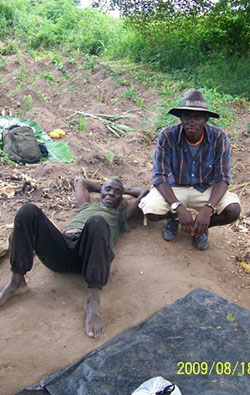Paulin Junior Vanié
Affiliation
MSc Student
Chemical and Environmental Toxicology
Email: pvani005@uottawa.ca
Research interests
Simulator of Human Intestinal Microbial Ecosystem (SHIME)
Mercury and selenium interaction
Human Gut Flora
Toxicology
Microbiology
Bio
I did my Honour’s Project with Dr. Chan as an undergrad student. It was a great opportunity, because the project I had was part of a collaboration research between Laurie and another research group from Laval University. During that project, I looked at the interaction between mercury and selenium from country food consumed by Inuit population from Nunavik, northern Québec. At that time, Brian Laird, a former post doc student of Laurie briefly told me about the SHIME. After my Honour’s project, I’ve expressed my desire to work on the SHIME to Laurie. He accepted me as a Master’s student and also offered me a job that summer in his lab.
Thanks to the opportunities given to me by Laurie, I’ve come to appreciate research in general but specifically the field of toxicology. One of the things I really like as a Masters student is solving new challenges every day as well as finding answers to scientific questions.
Apart for being in the lab and reading papers, I like playing and referring soccer games, running and enjoying life with my family and friends.
Research project
Biotransformation of methylmercury by human intestinal bacteria using the Simulator of Human Intestinal Microbial Ecosystem (SHIME)
I am looking at how the human gut flora modulates methylmercury using the SHIME a gastro intestinal model. This model possesses five vessels. Three of those vessels represent the colon (ascending, transverse and descending). The two other vessels represent the small intestine and the stomach respectively. I will be using the SHIME to grow several type of microorganisms encountered in the human gut. Once the microbiota of the SHIME reached a stable level, I will sample solution from the colon vessels, add methylmercury into them and measure methylation and demethylation.
